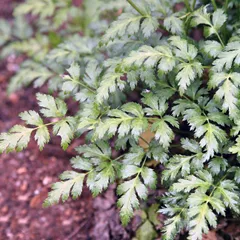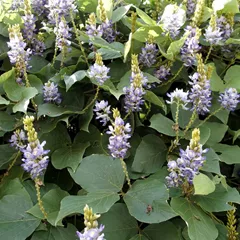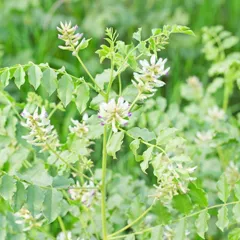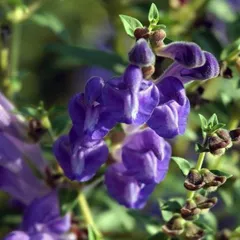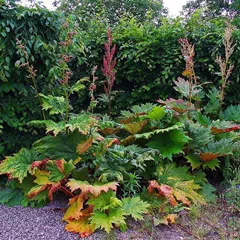Bacillary dysentery according to Chinese Medicine
The information provided here is not a replacement for a doctor. You shouldn't use it for the purpose of self-diagnosing or self-medicating but rather so you can have a more informed discussion with a professional TCM practitioner.
Bacillary dysentery factsheet
Possible causes and remedies:
Symptoms: Pain in the groin Alternating fever and chills Guarding of the abdominal musculature and one other symptom
Recommended formula: Da Huang Mu Dan Pi Tang
Phlegm-Fluids above the diaphragm
Symptoms: Wheezing No thirst Absence of sweating and five other symptoms
Recommended formula: Xiao Qing Long Tang
In Chinese Medicine, bacillary dysentery can be associated with two so-called "patterns of disharmony". Chinese Medicine sees the body as a system, not a sum of isolated parts. A "pattern" is when the system's harmony is disrupted. It is not equivalent to the Western concept of "disease", as a matter of fact here bacillary dysentery can be caused by two different patterns.
To understand whether someone's bacillary dysentery might be caused by a given pattern, one needs to look for signs and symptoms associated with the pattern beyond what one might typically experience from bacillary dysentery alone. For instance when bacillary dysentery is caused by the pattern Blood Stagnation with Heat, patients also experience symptoms such as lower abdominal distension and pain that increases with pressure, guarding of the abdominal musculature, pain in the groin and alternating fever and chills. Similarly, patients with Blood Stagnation with Heat typically exhibit rapid (Shu) or slippery (Hua) pulses as well as a pale tongue with yellow coating.
We've listed below a description of the two patterns associated with bacillary dysentery so that you can start to get an understanding of the various possibilities according to Chinese Medicine.
Once identified, patterns are often treated using herbal formulas. Drinking herbal infusions is the most common remedy in Chinese Medicine, together with acupuncture. Here we detail below ten formulas that can help treat the various patterns associated with bacillary dysentery, depending on which pattern fits your profile.
The two "patterns of disharmony" associated with bacillary dysentery

Rhubarb (Da Huang) is the key herb for Da Huang Mu Dan Pi Tang, a formula used for Blood Stagnation with Heat
Blood Stagnation with Heat
Pulse type(s): Rapid (Shu), Slippery (Hua)
Tongue coating: Yellow coating
Tongue color: Pale
Recommended herbal formula: Da Huang Mu Dan Pi Tang
Symptoms: Pain in the groin Alternating fever and chills Guarding of the abdominal musculature Lower abdominal distension and pain that increases with pressure
Bacillary dysentery might be due to Blood Stagnation with Heat if the condition is paired with typical pattern symptoms such as lower abdominal distension and pain that increases with pressure, guarding of the abdominal musculature, pain in the groin and alternating fever and chills. Similarly, patients with Blood Stagnation with Heat typically exhibit rapid (Shu) or slippery (Hua) pulses as well as a pale tongue with yellow coating.
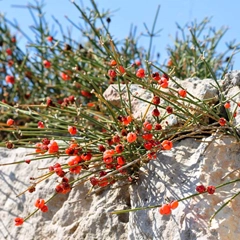
Ephedra (Ma Huang) is the key herb for Xiao Qing Long Tang, a formula used for Phlegm-Fluids above the diaphragm
Phlegm-Fluids above the diaphragm
Pulse type(s): Floating (Fu), Tight (Jin)
Tongue coating: Thick white coating
Tongue shape: Swollen
Recommended herbal formula: Xiao Qing Long Tang
Symptoms: Wheezing No thirst Absence of sweating Generalized body pain Alternating fever and chills General sensation of heaviness Stifling sensation in the chest Coughing of copious thin and white sputum
Bacillary dysentery might be due to Phlegm-Fluids above the diaphragm if the condition is paired with typical pattern symptoms such as alternating fever and chills, absence of sweating, wheezing and stifling sensation in the chest. Similarly, patients with Phlegm-Fluids above the diaphragm typically exhibit floating (Fu) or tight (Jin) pulses as well as a tongue with thick white coating.
The ten herbal formulas that might help with bacillary dysentery
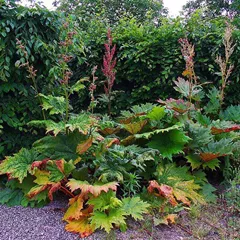
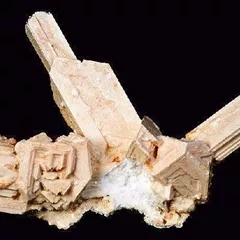
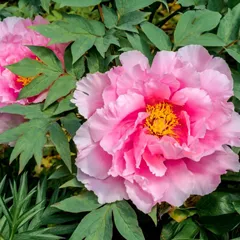
The top herbs in Da Huang Mu Dan Pi Tang are Rhubarb (Da Huang), Mirabilites (Mang Xiao) and Mudan Peony Bark (Mu Dan Pi)
Da Huang Mu Dan Pi Tang
Source date: 220 AD
Number of ingredients: 5 herbs
Key actions: Clears Stagnant Heat in the intestines. Reduces swelling and disperses lumps.
Why might Da Huang Mu Dan Pi Tang help with bacillary dysentery?
Because it is a formula often recommended to help treat Blood Stagnation with Heat, a pattern sometimes associated with bacillary dysentery. If it looks like you might suffer from Blood Stagnation with Heat, this formula might help (although please seek confirmation with a professional practitioner beforehand).

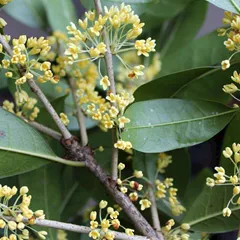
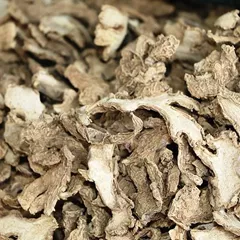
The top herbs in Xiao Qing Long Tang are Ephedra (Ma Huang), Cinnamon Twigs (Gui Zhi) and Dried Ginger (Gan Jiang)
Xiao Qing Long Tang
Source date: 220 AD
Number of ingredients: 8 herbs
Key actions: Releases the Exterior. Transforms Phlegm-Fluids. Warms the Lungs. Directs Rebellious Qi downward.
Why might Xiao Qing Long Tang help with bacillary dysentery?
Because it is a formula often recommended to help treat Phlegm-Fluids above the diaphragm, a pattern sometimes associated with bacillary dysentery. If it looks like you might suffer from Phlegm-Fluids above the diaphragm, this formula might help (although please seek confirmation with a professional practitioner beforehand).
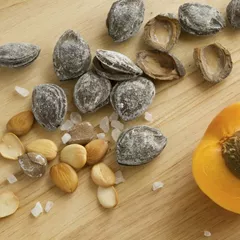
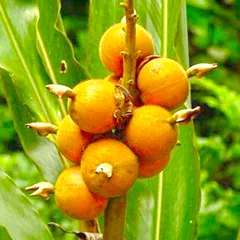
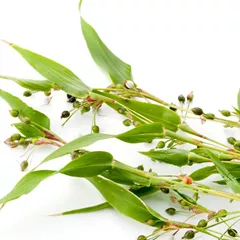
The top herbs in San Ren Tang are Apricot Seeds (Xing Ren), Cardamon Fruits (Bai Dou Kou) and Job's Tears (Yi Yi Ren)
San Ren Tang
Source date: 1798 AD
Number of ingredients: 8 herbs
Key actions: Clears Damp-Heat. Disseminates the Qi. Facilitates the Qi mechanisms.
Why might San Ren Tang help with bacillary dysentery?
Because it is a formula often recommended to help treat , a pattern sometimes associated with bacillary dysentery. If it looks like you might suffer from , this formula might help (although please seek confirmation with a professional practitioner beforehand).
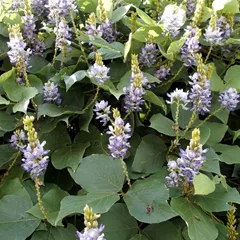


The top herbs in Ge Gen Tang are Kudzu Roots (Ge Gen), Ephedra (Ma Huang) and Cinnamon Twigs (Gui Zhi)
Ge Gen Tang
Source date: 220 AD
Number of ingredients: 7 herbs
Key actions: Releases the Exterior and muscle layer. Forms Body Fluids.
Why might Ge Gen Tang help with bacillary dysentery?
Because it is a formula often recommended to help treat , a pattern sometimes associated with bacillary dysentery. If it looks like you might suffer from , this formula might help (although please seek confirmation with a professional practitioner beforehand).
Ge Geng Huang Qin Huang Lian Tang
Why might Ge Geng Huang Qin Huang Lian Tang help with bacillary dysentery?
Because it is a formula often recommended to help treat , a pattern sometimes associated with bacillary dysentery. If it looks like you might suffer from , this formula might help (although please seek confirmation with a professional practitioner beforehand).
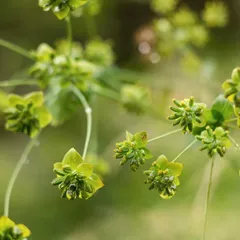


The top herbs in Chai Hu Gui Jiang Tang are Bupleurum Roots (Chai Hu), Cinnamon Twigs (Gui Zhi) and Baikal Skullcap Roots (Huang Qin)
Chai Hu Gui Jiang Tang
Source date: 220 AD
Number of ingredients: 7 herbs
Key actions: Harmonizes and releases the Lesser Yang. Removes Stagnation . Warms the Interior. Dispels Cold.
Why might Chai Hu Gui Jiang Tang help with bacillary dysentery?
Because it is a formula often recommended to help treat , a pattern sometimes associated with bacillary dysentery. If it looks like you might suffer from , this formula might help (although please seek confirmation with a professional practitioner beforehand).


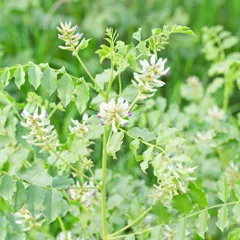
The top herbs in Huang Qin Tang are Baikal Skullcap Roots (Huang Qin), White Peony Roots (Bai Shao) and Liquorice (Gan Cao)
Huang Qin Tang
Source date: 220 AD
Number of ingredients: 4 herbs
Key actions: Clears Heat. Alleviates dysenteric disorders. Stops pain . Harmonizes the Middle Burner.
Why might Huang Qin Tang help with bacillary dysentery?
Because it is a formula often recommended to help treat , a pattern sometimes associated with bacillary dysentery. If it looks like you might suffer from , this formula might help (although please seek confirmation with a professional practitioner beforehand).
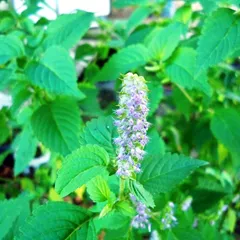
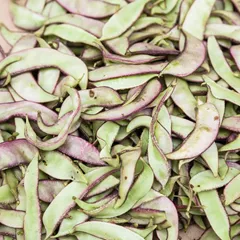
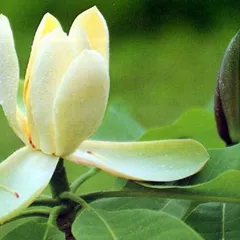
The top herbs in Xiang Ru San are Vietnamese Balm (Xiang Ru), Hyacinth Beans (Bai Bian Dou) and Houpu Magnolia Bark (Hou Pu)
Xiang Ru San
Source date: 1107 AD
Number of ingredients: 3 herbs
Key actions: Releases the Exterior. Scatters Cold. Transforms Dampness. Harmonizes the Middle Burner .
Why might Xiang Ru San help with bacillary dysentery?
Because it is a formula often recommended to help treat , a pattern sometimes associated with bacillary dysentery. If it looks like you might suffer from , this formula might help (although please seek confirmation with a professional practitioner beforehand).

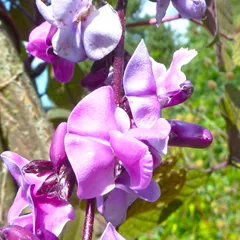

The top herbs in Xin Jia Xiang Ru Yin are Vietnamese Balm (Xiang Ru), Hyacinth Bean Flowers (Bian Dou Hua) and Hyacinth Beans (Bai Bian Dou)
Xin Jia Xiang Ru Yin
Source date: 1798 AD
Number of ingredients: 6 herbs
Key actions: Dispels Summerheat. Releases the Exterior. Clears Heat. Transforms Dampness .
Why might Xin Jia Xiang Ru Yin help with bacillary dysentery?
Because it is a formula often recommended to help treat , a pattern sometimes associated with bacillary dysentery. If it looks like you might suffer from , this formula might help (although please seek confirmation with a professional practitioner beforehand).
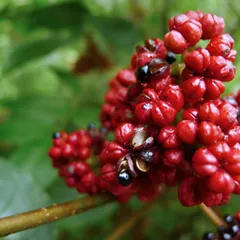
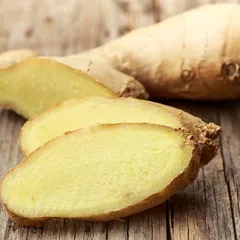

The top herbs in Wu Zhu Yu Tang are Evodia Fruits (Wu Zhu Yu), Fresh Ginger (Sheng Jiang) and Ginseng (Ren Shen)
Wu Zhu Yu Tang
Source date: 220 AD
Number of ingredients: 4 herbs
Key actions: Warms and tonifies the Liver and Stomach. Directs Rebellious Qi downward. Stops vomiting.
Why might Wu Zhu Yu Tang help with bacillary dysentery?
Because it is a formula often recommended to help treat , a pattern sometimes associated with bacillary dysentery. If it looks like you might suffer from , this formula might help (although please seek confirmation with a professional practitioner beforehand).
Symptoms related to bacillary dysentery
Alternating fever and chills Lower abdominal distension and pain that increases with pressure Guarding of the abdominal musculature Pain in the groin Absence of sweating Wheezing Stifling sensation in the chest General sensation of heaviness Generalized body pain No thirst

